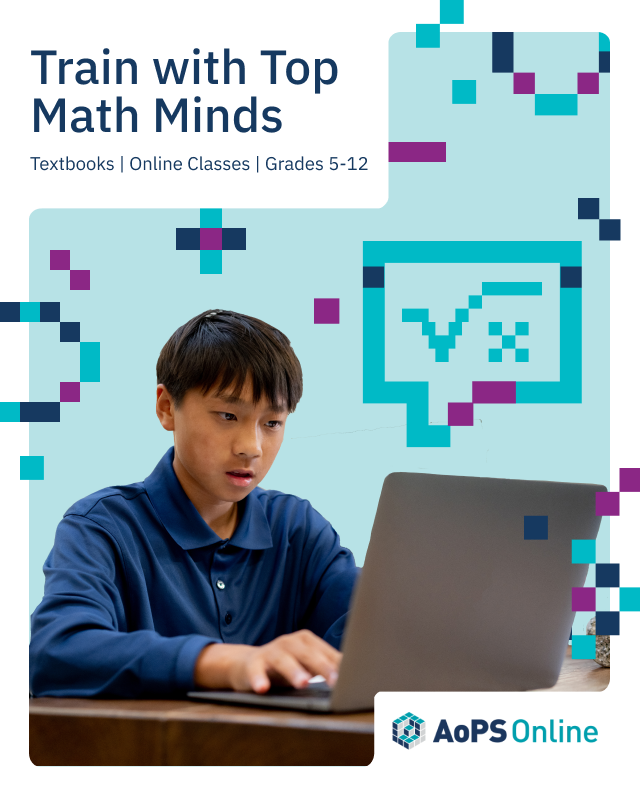Richard Rusczyk, Founder and CEO at Art of Problem Solving (AoPS), talks about how the existing academic gap in our classrooms turned into a chasm after the pandemic and how Art of Problem Solving families are navigating this new reality.
Classrooms have never been so filled with learning disparities. The pandemic has both underscored and exacerbated learning gaps between students with educational support at home and those without.
After two years of pandemic learning, a class of third graders might have students at a first-grade level sitting beside students at a fifth-grade level.
So how should families respond?
The State of“Back to School”
Many students didn’t make much progress during the pandemic. Although some families spent the last couple of years doing a lot of interesting math at home, many of their new classmates didn’t have those same opportunities.
Teachers returned to find increased disparity in students’ levels of interest and engagement. From a family perspective, students are coming home feeling frustrated that they’re being taught concepts they learned two years ago.
“We have to get more creative about how we are serving those students who were able to continue their education fruitfully throughout the pandemic,” Richard says.
At a school system level, the range of what each student needs in a classroom has grown a whole lot wider. Schools also face the challenge of staffing teachers who are equipped to address that disparity.
If that sounds like too much for schools to handle, well, it probably is.
“A lot of this is going to get solved by families,” Richard says.
Parents are the ones finding, or even creating new, opportunities for their advanced learners through methods such as:
- Extracurricular education
- Community groups (such as math circles)
- Extra support and challenge at home

Finding Time for Excellence
With schools facing the near-impossible task of supporting students at a broad range of levels, a lot of responsibility has fallen to families. How can families keep students challenged, inspired, and motivated to learn? And how do they find the time?
“They have to say no to something,” Richard says.
Younger students typically have fewer opportunities for extracurriculars, but high schoolers and even middle schoolers have entered the rat race to college admission.
Guiding students toward what they want to focus on means providing them early on with a breadth of options to explore and then later, helping them narrow that expertise.
“We want students to go very deep into something at some point,” Richard says.
“One of the critical skills we want them to learn during middle school and high school is how to get very good at something.”
What students need to develop is a love for excelling in a discipline — whether that’s violin, coding, or theater. Expertise for its own sake is arguably the most valuable and transferable skill we can cultivate in students.

Adaptability and a Problem Solving Skill Set
Most of the tools, roles, and skills Richard has encountered in his professional career didn’t even exist when he was in high school, he says. Rather than train for something specific that would soon become obsolete, Richard was trained to be adaptable.
“That starts with learning how to get very good at something. In order to get very good at something, you have to spend time on it. You have to say no to something else,” he says.
To grow your students’ expertise, create the space and the time for exploration so that when they find their passion, they can go deep into mastering it.
At AoPS, we train our students in the same way, providing them with the skills required to solve new and difficult problems. Students focus on deep subject mastery and a problem solving skill stack, including adaptability, creativity, critical thinking, and perseverance.
3 Ways to Keep Your Student Challenged
Want to keep your student motivated and inspired amidst today’s back-to-school challenges? Here are three ways you can help your student from home.
1 - Ask About Assignments
Grades will indicate whether your student’s class work is too easy. If they are getting perfect scores on everything, or if they’re finishing an hour assignment in 10 minutes, your student is not being challenged enough. This typically means your child is easily hitting or surpassing standards.
Conversely, if you’re getting reports of disruptive classroom behaviors from the teacher, this can also indicate your child is bored or checked out.
2 - Help Your Student Experiment
Guide your student to try different things until they find the two or three things they love to do. What do they gravitate toward for mental stimulation when they’re bored? This can often reveal a category of expertise to focus on.
Try different extracurricular activities until your child discovers their passion: robotics club, creative writing groups, math competitions, karate, etc.
In the seventh grade, Richard had his first experience at a math competition. Not only did he meet other students who valued numbers as he did, but he also encountered adults who weren’t his parents or teachers who were excited he could do math.
“It's getting the child to see a whole culture of people who value this activity,” Richard says.
When your child begs to practice the cello on Saturdays for fun, that’s when you’ve won.
3 - Challenge Your Student with Problems to Solve
“Education is a human problem, and technology is not going to solve the human problem all by itself,” Richard says.
Families should not rely on technology to teach children to appreciate and embrace learning. Rather, they must continually challenge children with problems and situations they’ve never seen before.
When Richard was a fifth or sixth grader, his dad needed to cut down a tree in the front yard. “If the tree falls in this direction, will it hit those power lines?” his dad asked. That question challenged Richard to stretch his mind to consider similarity, scale, and estimation.
Fast forward: They brought down the tree, and the power lines were safe.
“That's a real taste of problem solving,” Richard says. Get creative with the questions you ask and scenarios you present to your student.
For more ways to support your advanced problem solver, check out our Raising Problem Solvers Guidebook, filled with resources and actionable strategies you can start using today.
Resource Recommendations
Never run out of problems to solve! Here are some resources, recommended by Richard, to help your student stay challenged.
--
This episode was brought to you by Art of Problem Solving, where students train to become the great problem solvers of tomorrow.
To get weekly episode summaries right to your inbox, subscribe to the podcast at the bottom of this page, or anywhere you get podcasts. Ideas for the show? Reach us at podcast@aops.com.












